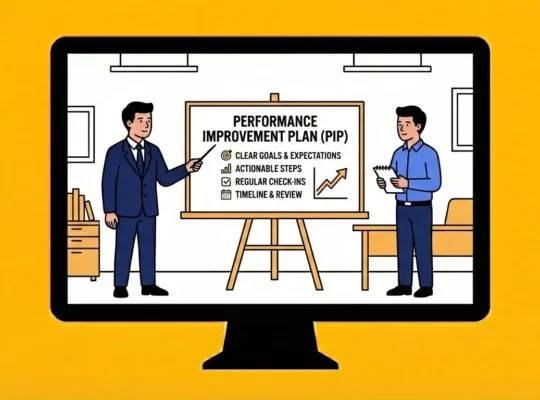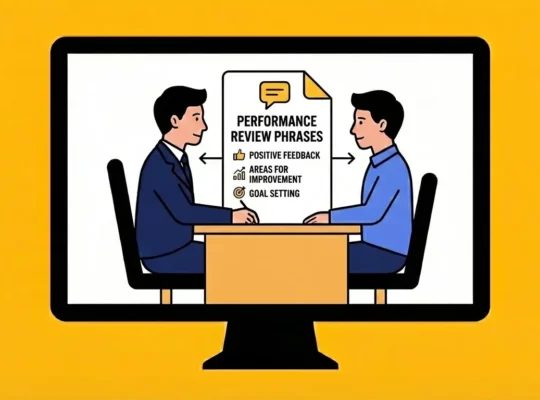The talent landscape is undergoing a significant shift. In an era where employee expectations are evolving rapidly, companies must adopt innovative recruitment strategies to stand out from the competition and attract top talent. Here at Review.jobs, we understand the changing dynamics of the job market and are dedicated to providing insights into the latest recruitment practices. This article explores a variety of innovative methods that can help companies not only attract but also retain top talent, ensuring a competitive edge in the industry.
Table of Contents
- Creative Job Postings and Advertisements
- Unique Interview Techniques and Processes
- Leveraging Technology in Recruitment
- Employee Referral Programs and Incentives
- Hosting Creative Recruitment Events
- Collaborating with Influencers and Thought Leaders
- Building a Strong Employer Brand
- Offering Continuous Learning and Development Opportunities
1. Creative Job Postings and Advertisements
Gone are the days of generic job descriptions. To captivate potential candidates, companies need to rethink their approach to job postings and advertisements. Engaging with potential employees requires more than just listing responsibilities; it necessitates storytelling and utilizing multimedia to craft a compelling narrative.
Storytelling in Job Descriptions
Facts are important, but stories resonate. By weaving narratives that highlight the company’s mission, values, and the essence of the job role itself, organizations can establish an emotional connection with job seekers. Instead of simply stating that a company is “looking for a software engineer,” a job description could describe a typical day in the life of an employee, showcasing the exciting projects they work on and the collaborative team environment. While doing so, make sure to:
- Focus on the Candidate: Instead of solely highlighting company achievements, tailor the job description to resonate with the candidate’s aspirations and values.
- Emphasize Impact: Clearly articulate how the role contributes to the company’s mission and the broader industry.
- Use Strong Visuals: Incorporate relevant images or icons to break up text and enhance readability.
Multimedia Elements
Human attention spans are shorter than ever, so captivating visuals and interactive elements can significantly enhance job postings. Consider incorporating:
- Video Content: Create short, engaging videos that showcase company culture, employee testimonials, or job responsibilities.
- Interactive Elements: Consider incorporating interactive elements such as quizzes, polls, or virtual tours to increase engagement.
- Mobile Optimization: Ensure job postings are optimized for mobile devices to cater to the growing number of job seekers using smartphones.
Leveraging Social Media
Social media platforms offer a powerful avenue for showcasing company culture and reaching a diverse audience. Share behind-the-scenes content, employee stories, and company achievements to create a relatable and engaging brand presence. Make sure to implement:
- Platform Selection: Choose social media platforms that align with your target audience. For example, LinkedIn is ideal for professionals, while Instagram and TikTok can reach a younger demographic.
- Consistent Branding: Maintain a consistent visual identity and tone of voice across all social media platforms.
- Paid Advertising: Utilize targeted social media advertising to reach specific demographics and job seekers.
2. Unique Interview Techniques and Processes
Traditional interviews can be one-dimensional and fail to provide a complete picture of a candidate’s capabilities. Innovative interview techniques can help companies assess candidates more effectively while creating a positive interview experience. By moving beyond the standard interview format, companies can gain deeper insights into a candidate’s problem-solving skills, creativity, and how well they might fit within the company culture.
Role-playing Scenarios
Role-playing scenarios allow companies to evaluate a candidate’s ability to handle real-world situations and their approach to problem-solving.
- Real-world Simulation: Role-playing scenarios provide a realistic glimpse into how a candidate might handle challenging situations. By simulating real-world work challenges, companies can assess problem-solving skills, decision-making abilities, and communication effectiveness.
- Tailored Scenarios: Customize role-playing scenarios to specific job requirements, ensuring that the assessment aligns with the role’s responsibilities.
- Observer Feedback: Involve multiple interviewers or observers to provide a comprehensive evaluation of the candidate’s performance.
Gamification
Gamification in the interview process can make the experience more engaging and interactive for candidates.
- Skill-Based Challenges: Design gamified assessments that directly measure job-related skills. For instance, a tech company could utilize coding challenges to assess programming proficiency, while a marketing firm could use creative puzzles to evaluate strategic thinking and problem-solving abilities.
- Problem-Solving Games: Utilize puzzles or riddles to evaluate critical thinking and problem-solving abilities.
- Team-Based Challenges: Assess collaboration and teamwork skills by assigning group-based challenges or case studies.
Case Study Interviews
Case study interviews provide a realistic assessment of a candidate’s problem-solving and decision-making abilities. By presenting candidates with real-world business challenges, companies can evaluate their analytical skills, creativity, and strategic thinking. For an optimal case study interview, make sure to:
- Clearly Define the Problem: Provide candidates with a well-defined problem or challenge.
- State Relevant Information: Offer sufficient data and information for candidates to analyze.
- Set Time Constraints: Set a time limit to simulate real-world pressure.
- Follow-up with Questions: Prepare insightful questions to probe candidates’ thought processes and decision-making.
3. Leveraging Technology in Recruitment
The integration of technology can streamline the recruitment process, enhance the candidate experience, and attract a wider pool of talent. From AI-powered chatbots to virtual reality experiences, these technologies offer innovative approaches to attracting top talent.
AI-powered Chatbots
AI-powered chatbots are transforming the way organizations interact with potential candidates. By automating routine tasks and providing personalized experiences, chatbots enhance efficiency and improve candidate satisfaction.
- 24/7 Availability: AI-powered chatbots can provide instant responses to candidate inquiries, regardless of time zone, ensuring a seamless candidate experience.
- Personalized Interactions: By leveraging data and machine learning, chatbots can offer tailored information and recommendations based on candidate preferences and qualifications.
- Process Automation: Chatbots can automate routine tasks such as scheduling interviews, sending reminders, and providing application status updates, freeing up recruiters to focus on higher-value activities.
Virtual Reality (VR) Experiences
VR offers a unique way to showcase the work environment and simulate on-the-job experiences, particularly valuable for attracting remote candidates who may not have the opportunity to visit the office in person.
- Immersive Candidate Experience: VR technology can create immersive experiences that showcase the company culture, work environment, and job roles in a realistic and engaging way.
- Remote Talent Acquisition: VR enables companies to connect with candidates located in different geographical regions, expanding the talent pool.
- Skill Assessment: VR can be used to assess candidates’ skills in a simulated work environment, providing a more accurate evaluation of their capabilities.
Candidate Relationship Management (CRM) Systems
A robust CRM system is essential for managing the complex landscape of talent acquisition. By centralizing candidate data and providing actionable insights, CRMs empower organizations to optimize their recruitment processes.
- Data Centralization: CRM systems consolidate candidate information, enabling efficient tracking and management of the recruitment process.
- Talent Pools: Build and nurture talent pools for future hiring needs by staying connected with potential candidates.
- Analytics and Insights: Gather data on candidate behavior and preferences to inform recruitment strategies and improve the candidate experience.
4. Employee Referral Programs and Incentives
Employee referral programs are a powerful tool for attracting high-quality candidates. By incentivizing current employees to refer potential candidates from their networks, companies can tap into a broader talent pool filled with individuals who may already possess a strong understanding of the company culture and its values.
Creative Incentives
To maximize employee participation and motivation, referral programs should offer a variety of incentives that cater to diverse preferences.
- Tiered Rewards: Implement a tiered reward system based on the number or quality of referrals. This creates a sense of progression and encourages employees to strive for higher levels of achievement.
- Personalized Incentives: Allow employees to choose from a range of rewards, such as cash bonuses, gift cards, experiences, or charitable donations. This fosters a sense of ownership and increases satisfaction.
- Unexpected Rewards: Surprise employees with unexpected bonuses or gifts to maintain engagement and excitement within the referral program.
Gamification of Referral Programs
Gamifying referral programs by introducing leaderboards and point systems can add a competitive element, encouraging employees to participate.
- Leaderboards and Competitions: Introduce friendly competition by creating leaderboards and recognizing top referrers. This can boost engagement and encourage employees to actively participate.
- Referral Challenges: Create themed referral challenges, such as referring candidates from a specific industry or with a particular skill set, to add an element of excitement.
- Referral Bonuses: Offer referral bonuses that increase with each successful referral, incentivizing employees to make multiple referrals.
Employee Recognition and Empowerment
Recognizing and empowering employees are essential components of a successful employee advocacy program. By celebrating achievements and providing support, organizations can foster a culture where employees feel valued and motivated to promote the company.
- Public Acknowledgement: Recognize and celebrate top referrers during company meetings, newsletters, or social media to boost morale and encourage others to participate.
- Referral Ambassador Program: Create a dedicated group of employee ambassadors who actively promote the referral program and share their experiences.
- Referral Training: Provide employees with training on how to effectively identify and refer potential candidates.
5. Hosting Creative Recruitment Events
Recruitment events offer a valuable opportunity to connect with potential candidates face-to-face and showcase the company culture. By hosting creative and engaging events, organizations can differentiate themselves and attract top talent.
Hackathons and Coding Challenges
- Talent Identification: Hackathons and coding challenges provide a platform to identify skilled developers and engineers with problem-solving abilities.
- Company Culture Showcase: These events demonstrate the company’s commitment to innovation and collaboration.
- Employer Branding: Successful hackathons can generate positive media coverage and enhance the company’s online reputation as an employer of choice.
Workshops and Seminars
- Industry Thought Leadership: Hosting workshops or seminars on industry-relevant topics positions the company as an expert in the field.
- Talent Attraction: These events attract candidates interested in professional development and learning opportunities.
- Networking Opportunities: Provide opportunities for attendees to network with company representatives and other industry professionals.
Virtual and Hybrid Events
- Online Workshops and Webinars: Reach a wider audience by hosting virtual events.
- Virtual Career Fairs: Utilize virtual platforms to connect with candidates from different locations.
- Hybrid Events: Combine in-person and virtual elements to cater to different audience preferences.
6. Collaborating with Influencers and Thought Leaders
Partnerships with influencers and thought leaders can amplify a company’s reach and attract potential candidates. These collaborations can enhance the company’s talent brand and highlight its industry leadership.
Partnerships with Industry Influencers
- Targeted Outreach: Identify influencers whose audience aligns with the company’s target demographic and initiate relationships.
- Content Collaboration: Co-create content such as blog posts, webinars, or podcasts to share industry insights and showcase the company’s expertise.
- Employee Ambassador Programs: Encourage employees to connect with industry influencers and build relationships.
Inviting Thought Leaders
- Thought Leadership Events: Host webinars or conferences featuring industry thought leaders to attract potential candidates and showcase the company’s knowledge.
- Content Partnerships: Collaborate with thought leaders to create valuable content that positions the company as an industry leader.
- Mentorship Opportunities: Offer mentorship opportunities for employees with industry thought leaders to foster professional development.
7. Building a Strong Employer Brand
A strong employer brand is crucial for attracting and retaining top talent. Companies need to highlight their unique value proposition and demonstrate why they are an employer of choice.
Employee Testimonials and Success Stories
Let your employees be your brand ambassadors! Highlight your employer brand with Review.jobs by showcasing employee reviews on your public employer profile, career pages, and social media channels. These real-life narratives offer potential candidates a glimpse into the company culture, work environment, and growth opportunities available.
Diversity and Inclusion Campaigns
Showcase a genuine commitment to fostering a diverse and inclusive workplace. Highlight initiatives that create a welcoming environment where everyone feels valued and respected. This commitment attracts talented individuals who thrive in collaborative and equitable settings.
Social Responsibility
Demonstrate your company’s dedication to making a positive impact on society. Highlight your corporate social responsibility initiatives – whether it’s environmental sustainability, community involvement, or charitable partnerships. Candidates who value purpose and social good are more likely to be drawn to companies that share their values.
8. Offering Continuous Learning and Development Opportunities
To truly foster a culture of continuous learning, organizations must empower employees to take ownership of their development. By encouraging employees to explore their interests and pursue knowledge independently, organizations cultivate a mindset of lifelong learning and adaptability.
Upskilling Programs
- Targeted Training: Identify skill gaps within the organization and offer specialized training programs to address them.
- Certification Programs: Support employees in obtaining industry-recognized certifications to enhance their credibility and expertise.
- Tuition Reimbursement: Provide financial assistance for employees pursuing higher education or professional development courses.
- Digital Learning Platforms: Leverage online platforms to offer flexible and accessible learning opportunities.
Mentorship and Coaching
- Formal Mentorship Programs: Establish structured mentorship programs that match mentors with mentees based on career goals and interests.
- Peer Mentoring: Encourage peer-to-peer learning and knowledge sharing through mentorship initiatives.
- Coaching for Development: Offer coaching services to help employees identify strengths, weaknesses, and career aspirations.
- Leadership Development Programs: Invest in developing future leaders through targeted training and mentorship.
Self-Directed Learning
- Learning Management Systems (LMS): Provide access to online learning platforms with a variety of courses and resources.
- Employee Resource Groups (ERGs): Create ERGs focused on specific skill development or interest areas.
- Professional Development Budgets: Allocate funds for employees to attend conferences, workshops, or seminars.
- Flexible Work Arrangements: Offer flexible work options to accommodate employee learning and development activities.
By embracing creative approaches and leveraging technology, companies can attract and retain top talent, ensuring their continued success in a competitive job market. Let your employer brand shine bright with Review.jobs by leveraging employee testimonials. Remember, the key to attracting the best talent lies in showcasing your company’s unique culture, values, and commitment to employee growth and development.





